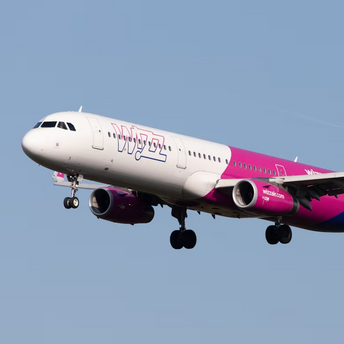Aeromexico 737 MAX 8 Encounters Crosswind Challenge at Mexico City Airport

An Aeromexico Boeing 737 MAX 8 experienced a precarious moment this Sunday at Benito Juárez International Airport in Mexico City when its left wingtip made contact with the ground during a complex landing maneuver exacerbated by strong crosswinds. The incident, involving flight AM495 from Seattle to Mexico City, prompted the flight crew to execute go-around procedures not once, but twice, underscoring the challenges posed by adverse weather conditions on aircraft operations.
Incident Overview
The aircraft, bearing the registration XA-CCN, embarked on its journey from Seattle-Tacoma International Airport, cruising at altitudes of up to 41,000 feet. As it approached Mexico City in the early afternoon, the pilots faced the daunting task of landing amidst gusty crosswinds, a situation that led to the wingtip scrape during one of their landing attempts on runway 05R.
Flight data reveals a series of aborted landings, with the aircraft having to ascend and realign for the runway multiple times. The ordeal culminated in a successful landing after the third attempt, thankfully without any reported injuries to passengers or crew. The subsequent arrival delay and the aircraft’s redirection to gate 52 over an hour post-landing hinted at the unforeseen challenges faced during the final approach.
Crosswind Landing Challenges
Crosswind landings are a notable aspect of pilot training, requiring precise maneuvers to ensure the aircraft aligns safely with the runway. The incident on Sunday highlights the unpredictable nature of wind conditions, particularly at airports like Benito Juárez International, where wind gusts reached up to 17 mph during the aircraft's landing timeframe. Such conditions not only test the skill and experience of pilots but also underscore the importance of rigorous training and adherence to safety protocols during adverse weather conditions.
Aftermath and Safety Considerations
Following the incident, Aeromexico took immediate steps to assess and repair the minor damage to the 737 MAX 8, with the aircraft temporarily withdrawn from service for inspection. The airline efficiently managed its flight schedule by deploying an alternative aircraft for the subsequent day’s flight to Denver, ensuring minimal disruption to passengers.
The incident serves as a reminder of the challenges and risks associated with crosswind landings, highlighting the critical role of pilot expertise, aircraft design, and airport operational readiness in maintaining safety. With wind conditions remaining a variable factor in flight operations, airlines and pilots continuously adapt and respond to ensure the safety and well-being of all on board.
Moving Forward
As Aeromexico and aviation authorities review the incident, the focus remains on learning and implementing measures to prevent similar occurrences. The resilience of pilots in navigating the complexities of crosswind landings, coupled with the aviation industry's commitment to safety, ensures that flying remains one of the safest modes of transportation, even in the face of nature's unpredictability.



















